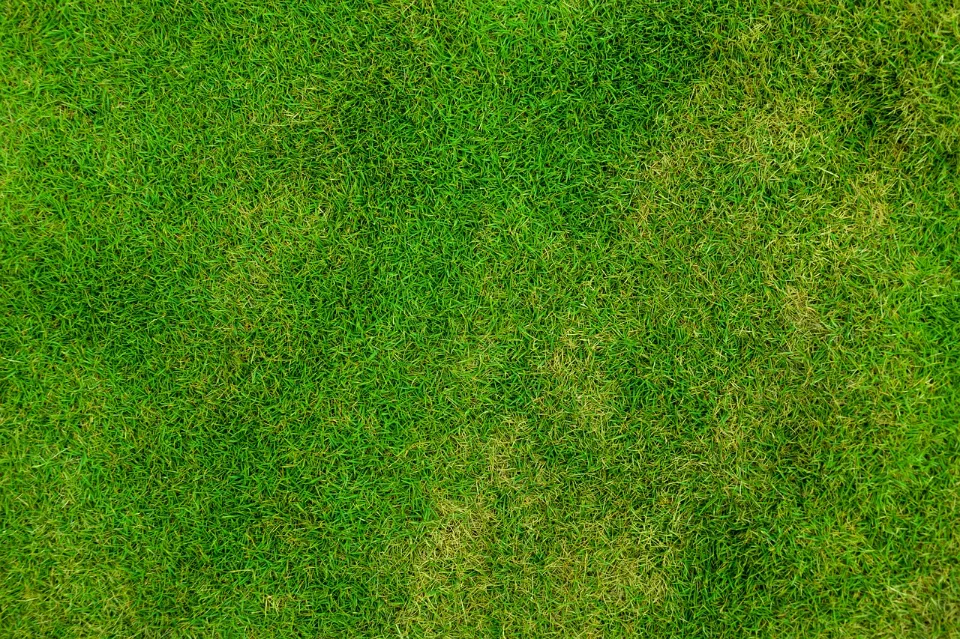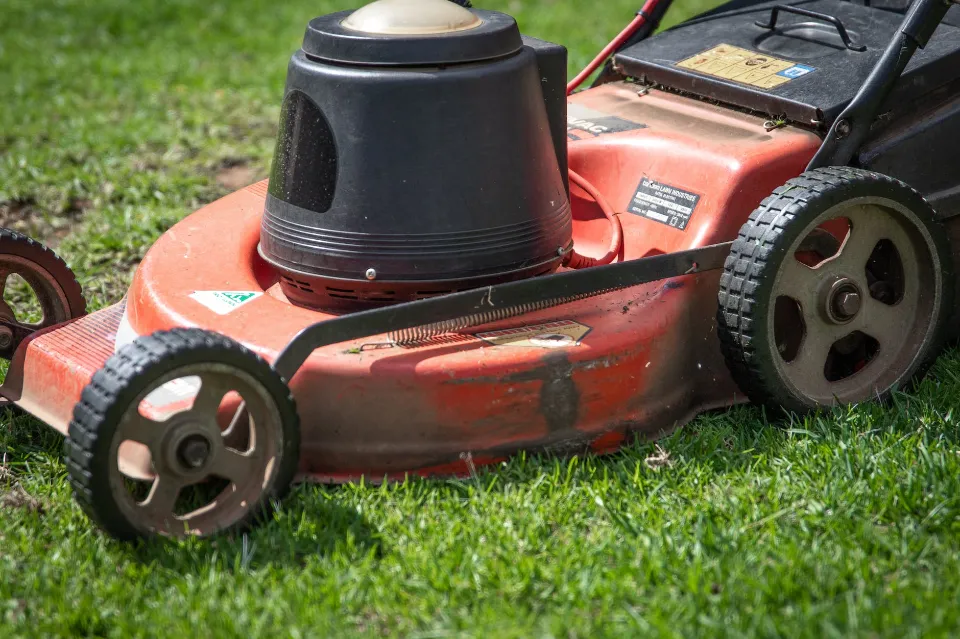One simple but efficient way to shape your yard is to edge the lawn. Creating borders, patios, and paths with a smart, polished finish is made possible by this easy and calming task, which can significantly alter the appearance of your outdoor space. Additionally, it can facilitate and accelerate ongoing maintenance tasks and activities like border mulching and weeding.
Trimming the grass where it meets your patio, stone walkways, and other non-lawn features in your garden can serve as an easy way to edge a lawn.
How to Edge a Lawn

Whatever the state of your lawn, tidying the edges will improve its appearance tenfold. To highlight the area, highlight planting, and display the plot design as a whole, draw a clean, smooth line between the grass and the surrounding soil or backyard pavers.
Also Read: How Often Should You Apply Sulfur to Lawn – 2023 Guide
Here’s how to edge a lawn in six easy steps.
1. Decide on the Shape of the Lawn
A backyard’s appearance and atmosphere can be drastically changed by changing the shape of your lawn and the area around it. While more wavy, irregular lines add a sense of movement and a much softer mood, straight edges produce a formal feeling.
‘Tim Rumball advises taking a closer look at lawn areas without an edge. ‘Where shrubs and other plants or objects throw shade on the lawn the grass often retreats, allowing the border soil to advance. Reduce the amount of shade by pruning plants or moving furniture, reshaping the edge line deeper into the lawn, or enlarging the flower border. There are only so many times you can shift the edge line.’
‘Additionally, you can use shapes to produce optical illusions. For example, straight borders down either side of a garden can make it appear smaller, while a sweeping curve can make it appear larger than it is, according to Rainer Schubert, managing director of garden tool manufacturer Burgon & Ball.
A maximum depth of about 3 ft 2 in is ideal when planting new flower beds or redefining existing flower beds and borders. This will give plants room to coexist without making it too difficult to weed or maintain the border.
2. Mark Out a New Lawn Edge
‘Before you begin cutting your flowers, it’s crucial to mark out your flower bed so you have a guideline to follow, says Schubert. ‘Trying to do it by eye is really a bad idea! Stretching string between two canes will produce straight lines. Use a piece of string fastened to a stake in the ground at the center to create a perfect circle. As you walk around the stake while holding the string taut, mark the ground with marking paint.’
Utilizing a wooden board as a guide is another way to achieve extremely straight edges. ‘Tim Rumball affirms, “Straight lines are simple. ‘Along the entire edge you want to cut, lay a garden line. Lay a thick, straight plank of wood along the line on the lawn side and, while standing on the plank, use a half-moon lawn edger to cut precisely along its edge. Lean the handle slightly forward to clearly define the cut after driving the edger blade into the ground close to the plank. As you climb the lawn, nudge the plank along.’
Tim’s suggestion for forming a curved lawn edge is to lay a hose precisely along the desired path. In order for it to maintain its shape, secure it with tent pegs on the lawn side. Next, carefully trim the hose’s exterior edge with a half-moon edger. Continue using the border spade to remove extra turf or toss soil into the border until the lawn has a distinct edge and the border has a vertical drop-away that is at least 2 inches deep.’
To sketch out their designs, many seasoned landscape designers use grass landscaping paint, such as this Seymour temporary marker paint from Amazon(opens in new tab). Coming in an easy-to-use spray can, simply spray the cutting line on the grass redrawing any corrections if needed. After being sprayed with a hose or getting wet, most paints wash off. Once the edge is cut, you can hose or brush away the outline you made with a few handfuls of sand.

3. Use the Right Tools
You can choose from manual and automated edging tools. There are many powered tools that can handle the job effectively, ranging from cordless edgers with rotating circular blades to side attachments for petrol and electric lawn mowers. These really shine when maintaining a freshly formed edge or, at the very least, when cutting new growth from a routinely trimmed outline.
A manual edger will produce neater and more accurate results if you’re looking to cut a new edge into a lawn or significantly alter its shape.
A half-moon lawn edger, also referred to as a step edger, is the ideal manual tool for creating precise lines in turf. It is intended to be stood on with one foot and pushed cleanly into turf to create a clean cut. It has a long handle and a semi-circular blade, sometimes with a serrated edge.
4. Cut the Edge
Edging a lawn with a manual half-moon lawn edger can take a while, depending on the size of the lawn but is very satisfying. A good technique can prevent back pain and ensure good results. To make a straight downward edge, move at a 90-degree angle with the grass.
The staff at lawn care specialists Rolawn(opens in new tab) also adds, “Place the edging tool about 2 inches from the edge and dig into the lawn about 2 inches deep. The extra soil and grass should rise along with the edging tool as you lift it. This can be put in a bucket and taken to your local garden waste facility or compost bin.’
To make a straight, jagged-free edge around the lawn, keep going while closely following the instruction.
5. Correcting Your Line
If you need to redraw your cutting line, simply mark over the existing one – as clearly as you can – and be mindful when you come to cutting in this area. In order to feel confident in your choice, it can often be helpful to step back and look at your suggested outline again.
If you do need to change a line that has already been cut, you can either move the line back into the existing lawn before recutting, or you can leave the extra turf in place and fill the cut with compost and grass seed.
Given a few weeks and moist, warm weather, small cuts in a lawn ought to be able to heal on their own.
6. Achieve a Smart Finish
It’s critical to regularly trim a lawn once a clean, vertical edge has been established. This may need to be done on a weekly basis during warm growing seasons, such as spring and early fall. Grass slows in growth during hot and cold weather reducing the need for any clipping.

Lawn Edging Issues to Watch Out For
When cutting your lawn edge, you might encounter some opposition. If you encounter one, it’s critical to recognize it so you can take the appropriate action before moving forward.
Irrigation pipes, electrical cables and substantial roots are all likely causes and should not be cut through. The best option, if they cannot be moved, is to change the edge’s direction, if possible, or to skip the obstruction and resume the cutting line immediately on the other side.
How to Repair a Broken Or Crumbling Lawn Edge
If a section of lawn edge has become too damaged to successfully create a firm edge in line with the rest of the lawn, you can repair it.
It’s best to remove a square section of turf that includes the broken edge using your edging iron or garden spade if you have a broken open edge in your lawn (if one of the edges does not extend right to the border for a short distance). This advice is provided by family-run Jacksons Nurseries(opens in new tab). To remove the turf, make an undercut along its underside. Then, flip it 180 degrees and reinstall it so that its straight edge is parallel to the edge of the lawn.’
By adding topsoil and reseeding, you can repair the damaged area that is currently a part of the lawn. Depending on the type of grass you are growing, either spring or fall is the ideal time to plant grass seed, so keep that in mind.
How to Maintain Lawn Edges
Once a clean lawn edge has been established, keep it looking its best by trimming with long-handled shears once a week. In order to prevent grass from encroaching on nearby borders, it is crucial to cut off any spreading rhizomes and long, straggling blades.
As you work the shears along the edge of the lawn, take a position facing the border of the lawn. To keep an even cutting line, press the side of the shear’s blade against the edge of the soil as you cut. Avoid using the blade tips to nick chunks out of the lawn’s edge.
How to Keep Manual Edging Tools Sharp
The secret to making a neat, professional lawn edge is using clean, sharp tools. Although using a metal file or sharpening stone to file the cutting edge is effective, a simpler method involves repeatedly pushing the cutting edge into a bucket of damp coarse sand. Additionally, this will aid in rust prevention and dirt removal.
When is the Best Time to Edge a Lawn?
The best season for edging a lawn is unquestionably spring because the grass is actively growing at this time and the soil is soft enough to cut into. Additionally, it will allow time for any recently added sections or repaired lawn edges to grow and establish before the summer heat takes over.
Make sure you are using the appropriate mower height for spring if you are also cutting the lawn at the same time so that the rest of the lawn will continue to look as stylish as your new edging.

How Do You Edge a Lawn Without An Edger?
A clean, sharp, straight spade is a good alternative to any lawn edger. Make sure the blade is as flat as possible; many spades have a slight concavity that can result in scalloped edges that are unsightly. When drawing sweeping curves, use a rope (or hose) as a guide rather than a wooden board for neat straight lines.
To make a groove, step on your spade, push it down into the ground about three inches, and then slightly pull the blade back and forth. Once the groove is complete, carefully remove the extra turf by sliding the spade underneath. Repeat along the line.
Conclusion
You should definitely try to prevent this in the summer, but spring is a great time of year to cut edging into your lawn because the grass is growing well and the soil hasn’t dried out from the summer’s heat and sun.).
A half-moon edging tool is the best tool to use to cut a clean edge into your lawn. These efficiently and neatly cut through the earth because they are made for edging lawns. It might be worthwhile to make the small investment if you intend to edge your lawn each spring going forward. You can also use a spade as an alternative. They can require a little more effort, but they can also complete the task!
Frequently Asked Questions
What is the Best Way to Edge a Lawn?
Follow these 10 easy steps, beginning with mowing and concluding with maintenance, for the best results when edging your lawn. For the best results, make sure to select the best edger (or edgers) for your lawn. Always try to edge on the hard surface, such as your driveway or walkway.
What is the Best Tool for Edging a Lawn?
Power edgers like string trimmers, hand edgers with half-moon blades, and even edging shears are all options for edging your lawn. Your budget, available time, and the shape of the edges you need to create will all influence the best tool for the job.
How Do I Manually Edge My Lawn?
Just like a shovel, handle your manual edger. Drive it gently down into the ground, keeping it as straight as possible, with your feet, until the lip meets the soil. When you want to make an edge, gently rock the edger from side to side.
How Can I Edge My Lawn Without An Edger?
You can start by lowering the cutting blade on your lawn mower and shave cleanly down your lawn. Installing permanent lawn edging, frequently made of rubber or steel, is the next step. Another option is laying down lawn edging pavers, which you place in a prepared trench.








